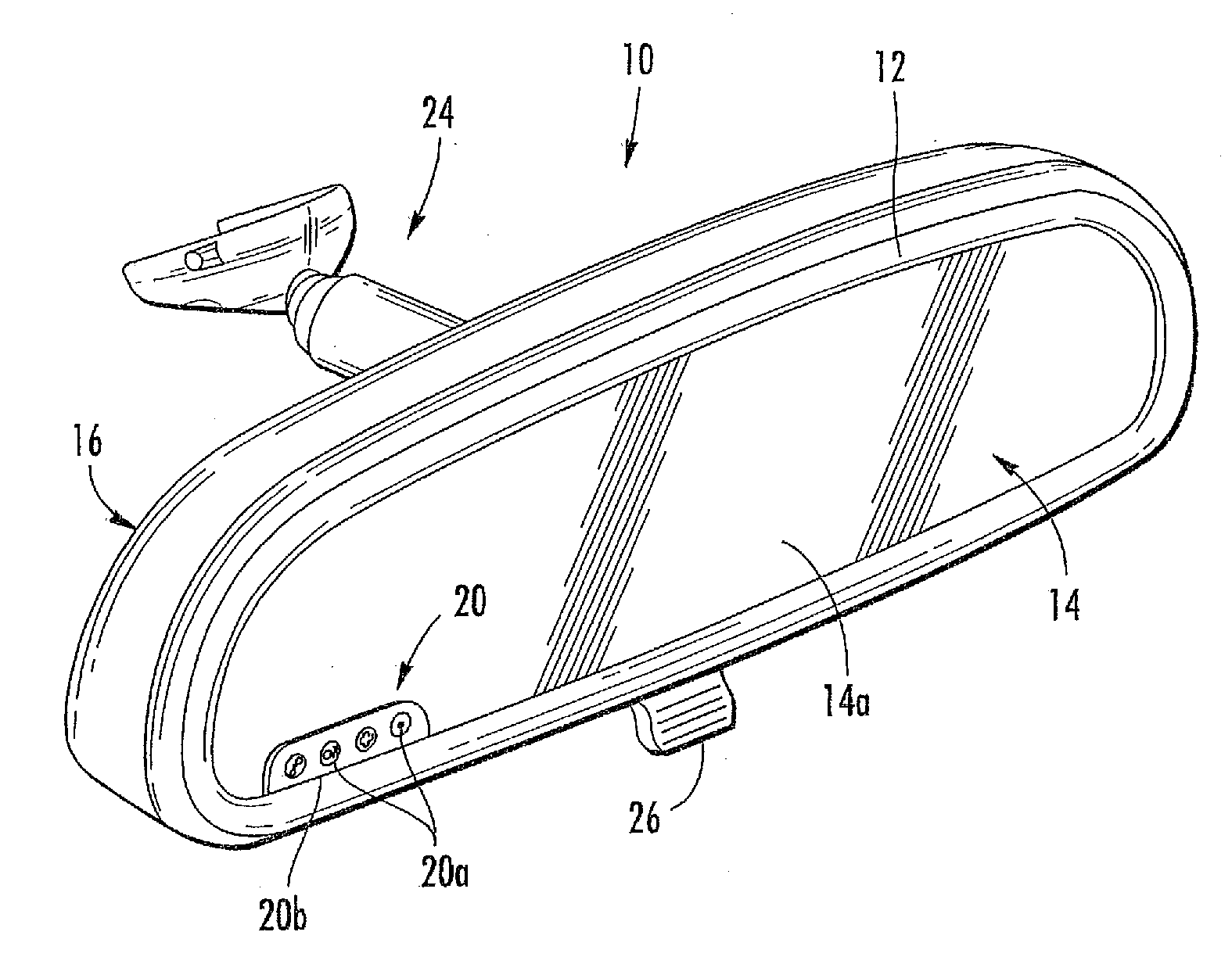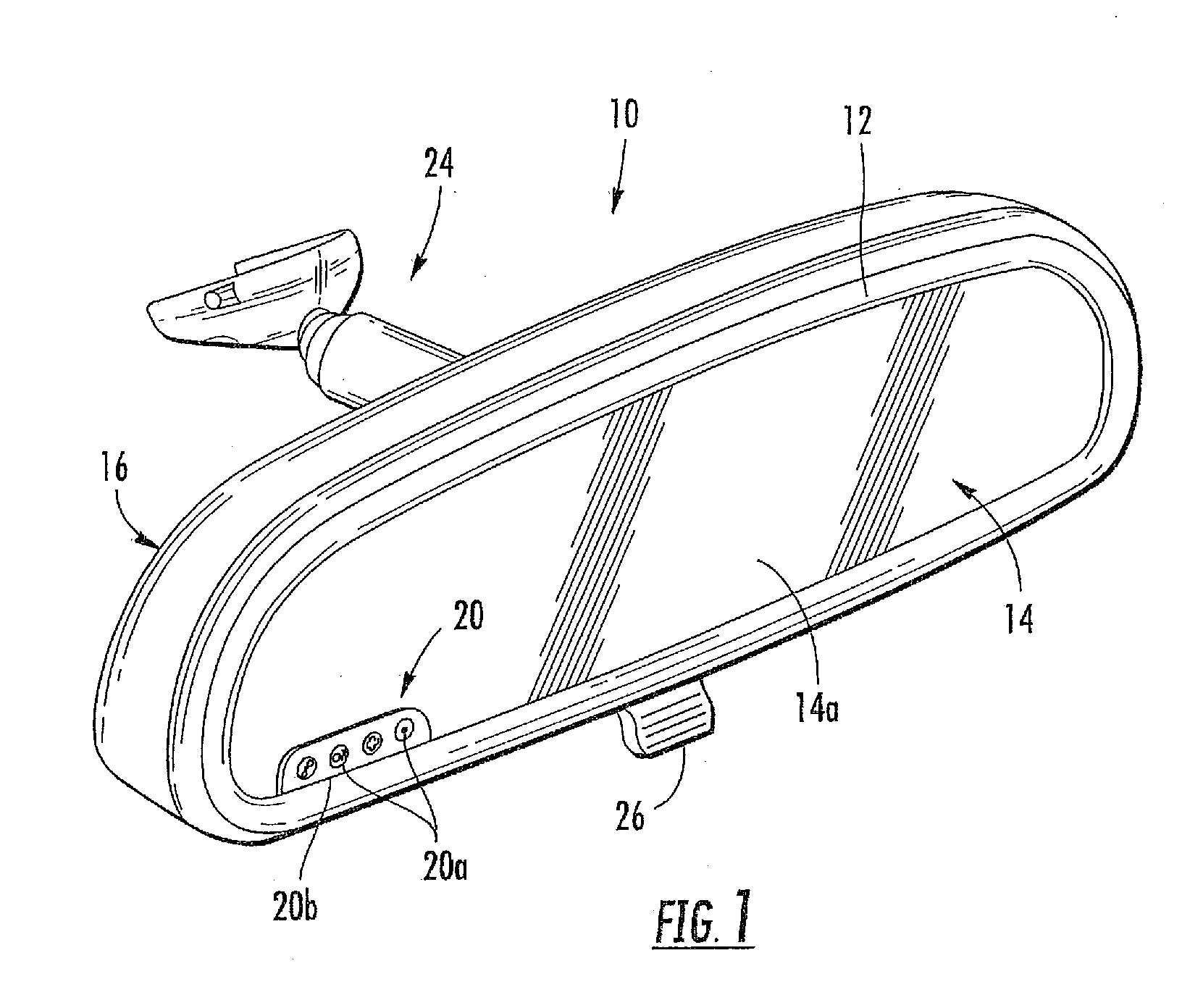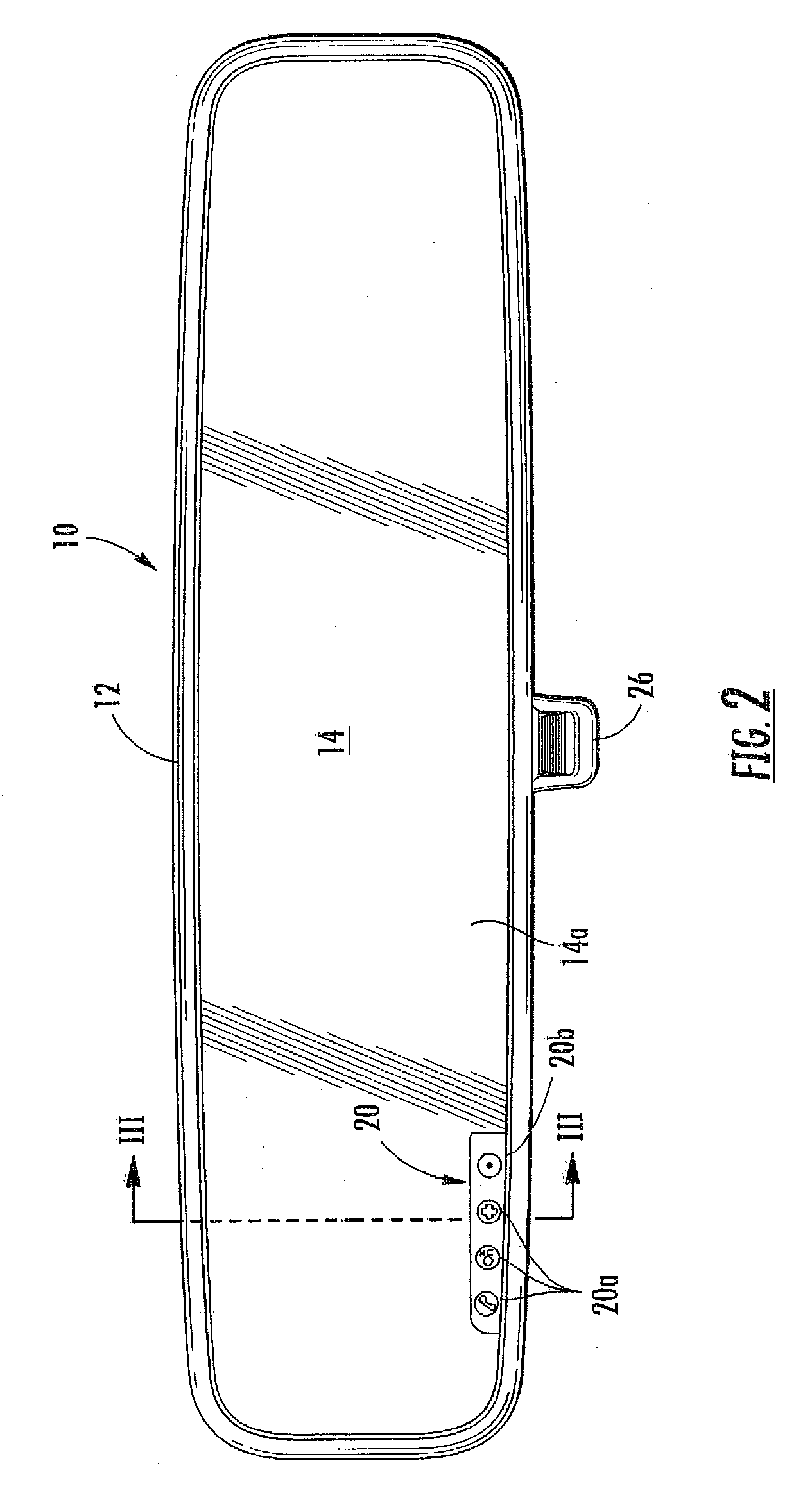Mirror assembly for vehicle
a technology for rearview mirrors and mirrors, applied in the direction of optical elements, instruments, transportation and packaging, etc., can solve the problem of considering the cost of mirror reflective elements and achieve the effect of facilitating customization or personalization
- Summary
- Abstract
- Description
- Claims
- Application Information
AI Technical Summary
Benefits of technology
Problems solved by technology
Method used
Image
Examples
Embodiment Construction
[0028]Referring now to the drawings and the illustrative embodiments depicted therein, an interior rearview mirror assembly 10 for a vehicle includes a bezel portion 12, a mirror reflective element 14 positioned at and at least partially within the bezel portion, and a rear casing portion 16. Mirror assembly 10 may include a printed circuit board 18 (FIG. 3) or a flex circuit having an electronic accessory or circuitry thereon or integrated therein or attached thereto. Mirror assembly 10 includes a user input overlay element or membrane or sheet 20, which is positioned at or on the front surface 14a (the surface facing generally toward the driver of the vehicle when the mirror assembly is installed in the vehicle) and operable to activate / deactivate / control one or more accessories or displays or display elements or the like, as discussed below. The overlay element or membrane 20 may be adhered or bonded or otherwise attached or secured to the front surface 14a of the reflective elem...
PUM
 Login to View More
Login to View More Abstract
Description
Claims
Application Information
 Login to View More
Login to View More - R&D Engineer
- R&D Manager
- IP Professional
- Industry Leading Data Capabilities
- Powerful AI technology
- Patent DNA Extraction
Browse by: Latest US Patents, China's latest patents, Technical Efficacy Thesaurus, Application Domain, Technology Topic, Popular Technical Reports.
© 2024 PatSnap. All rights reserved.Legal|Privacy policy|Modern Slavery Act Transparency Statement|Sitemap|About US| Contact US: help@patsnap.com










